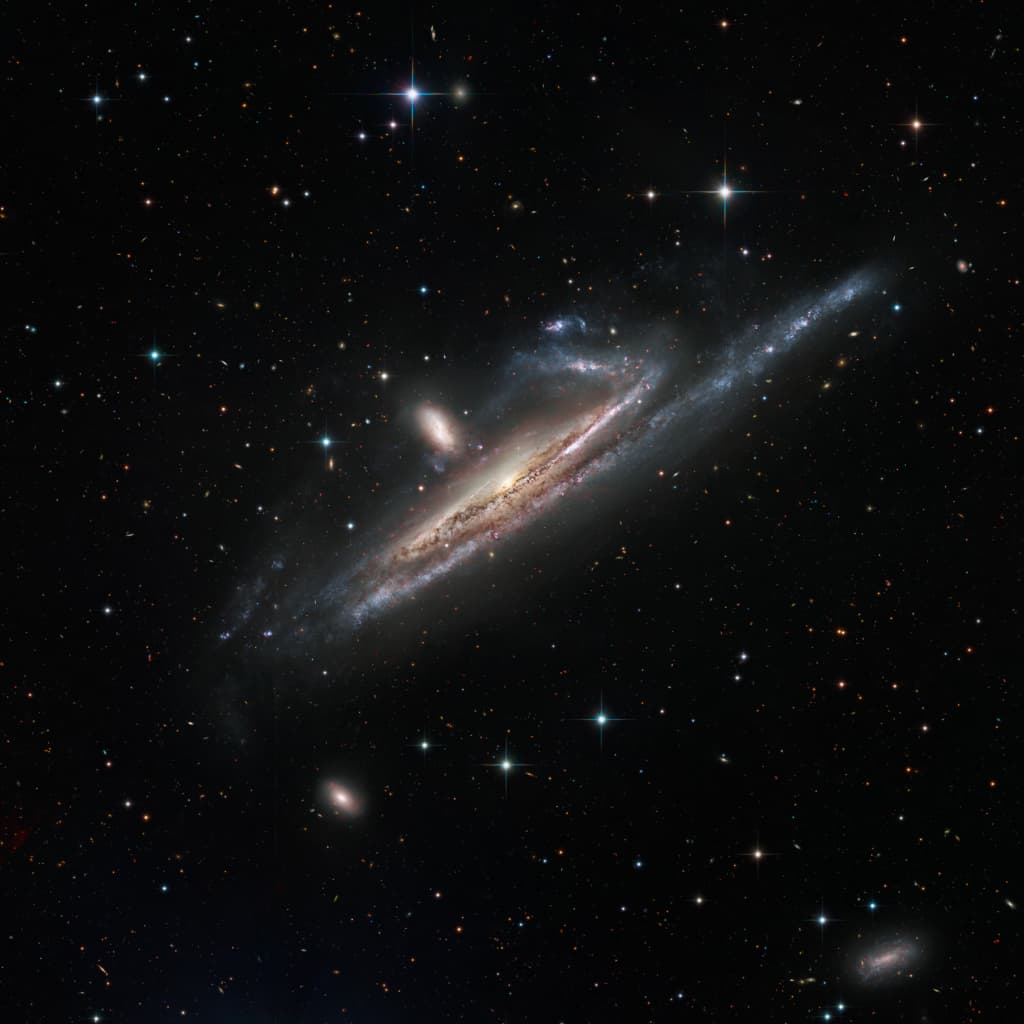The Daily Cosmos

Galaxies in the River
Large galaxies grow by eating small ones. Even our own galaxy engages in a sort of galactic cannibalism, absorbing small galaxies that are too close and are captured by the Milky Way's gravity. In fact, the practice is common in the universe and illustrated by this striking pair of interacting galaxies from the banks of the southern constellation Eridanus, The River. Located over 50 million light years away, the large, distorted spiral NGC 1532 is seen locked in a gravitational struggle with dwarf galaxy NGC 1531, a struggle the smaller galaxy will eventually lose. Seen nearly edge-on, in this sharp image spiral NGC 1532 spans about 100,000 light-years. The NGC 1532/1531 pair is thought to be similar to the well-studied system of face-on spiral and small companion known as M51.
Welcome to The Daily Cosmos
The Daily Cosmos is your window to the wonders of the universe. Each day, we feature a stunning image from NASA's Astronomy Picture of the Day (APOD), accompanied by an insightful explanation from scientists, offering you a glimpse into the vast beauty of space.
Whether you're a space enthusiast or just curious about the cosmos, The Daily Cosmos makes it easy for you to discover the mysteries of our universe. From galaxies far away to the tiniest details of our own solar system, we bring you fresh perspectives every day, with the goal of sparking curiosity and inspiring awe.
So sit back, relax, and explore the infinite beauty of space—one image at a time.